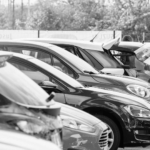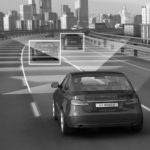Two years ago, I was traveling to work on a pretty average rainy Tuesday. The traffic began to slow as we approached a turning, and the person behind me (who was perhaps changing the station on their radio or looking in their mirrors or something) didn’t notice my brake lights. As little as a few seconds later, I heard the biggest bang I have ever heard in my life, as my car was smashed into from behind at high speed. Thankfully, my car at the time was much bigger than the car that hit me, so we didn’t flip or anything, but both cars were in such a state of disrepair that they were winched onto a flatbed pickup truck and taken away to the scrapyard (if you have been affected, make contact with a Nashville car accident lawyer).
That day, I realised that sometimes you can be prepared and you can be paying attention but things can still go wrong. That’s when I looked into car crashes and how to avoid them. Because if things are going to go wrong, there might be ways that we can lessen the impact or even outright avoid high-risk situations.
Most crashes are rear-end crashes
Approximately one-third of all road accidents are rear-end crashes. Of all recorded rear-end collisions, almost 90% of people claim to have been distracted before ploughing into the car in front. If you think that the driver behind you is not observing the three-second stopping rule, you must educate them while there is no reason to stop, before the car in front of you stops and you become sandwiched.
The process is simple. You don’t necessarily need to brake to force a reaction out of your tailgating fellow road user, because this could cause accidents in itself, but by simply reducing your speed through easing off the accelerator you can watch to see if they react (if they don’t, obviously build up your speed again). The hope is that the tailgater will realise how close they are and reduce their speed before brake lights and the risk of crashing are involved.
Aquaplaning is a real danger
As many as 1 in 10 road accidents occur due to skidding on wet surfaces. Poor driving conditions mean that drivers should reduce their speed, but very few people take the extra travel time into consideration and instead prefer to risk becoming a statistic in an attempt to make it to work on time.
There’s not a lot you can do about the weather, and sometimes you have to travel in heavy rain. The idea is to avoid cruise control, reduce speed, and travel off-peak if possible. Take the extra time to avoid busy roads that you know will be filled with speeding drivers – take a detour and feel good that you’re not risking your life. Speak to your place of work and explain that you may have to arrive early to avoid any reported bad weather (usually, places of work are supportive over people’s fears of driving in adverse weather conditions).





